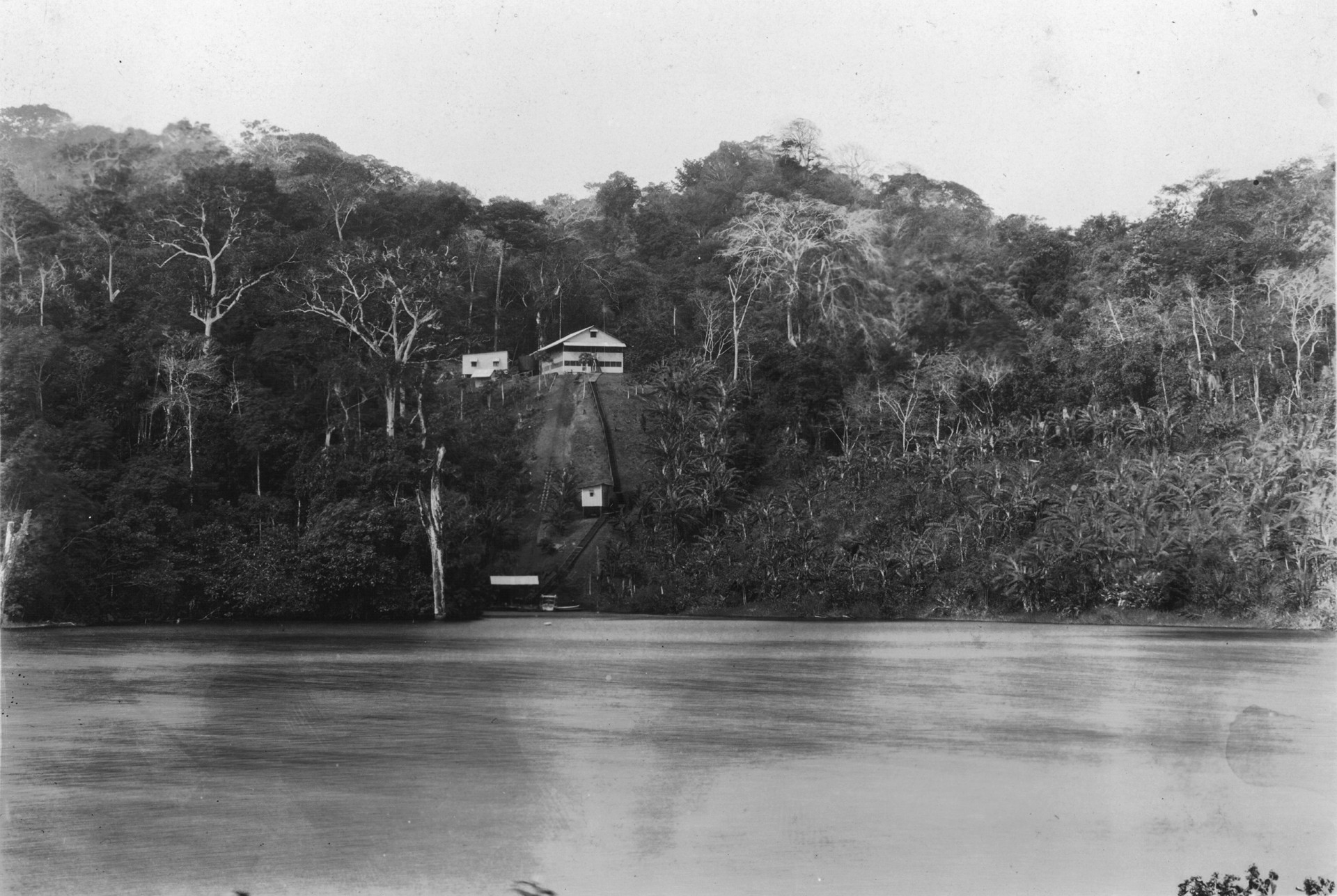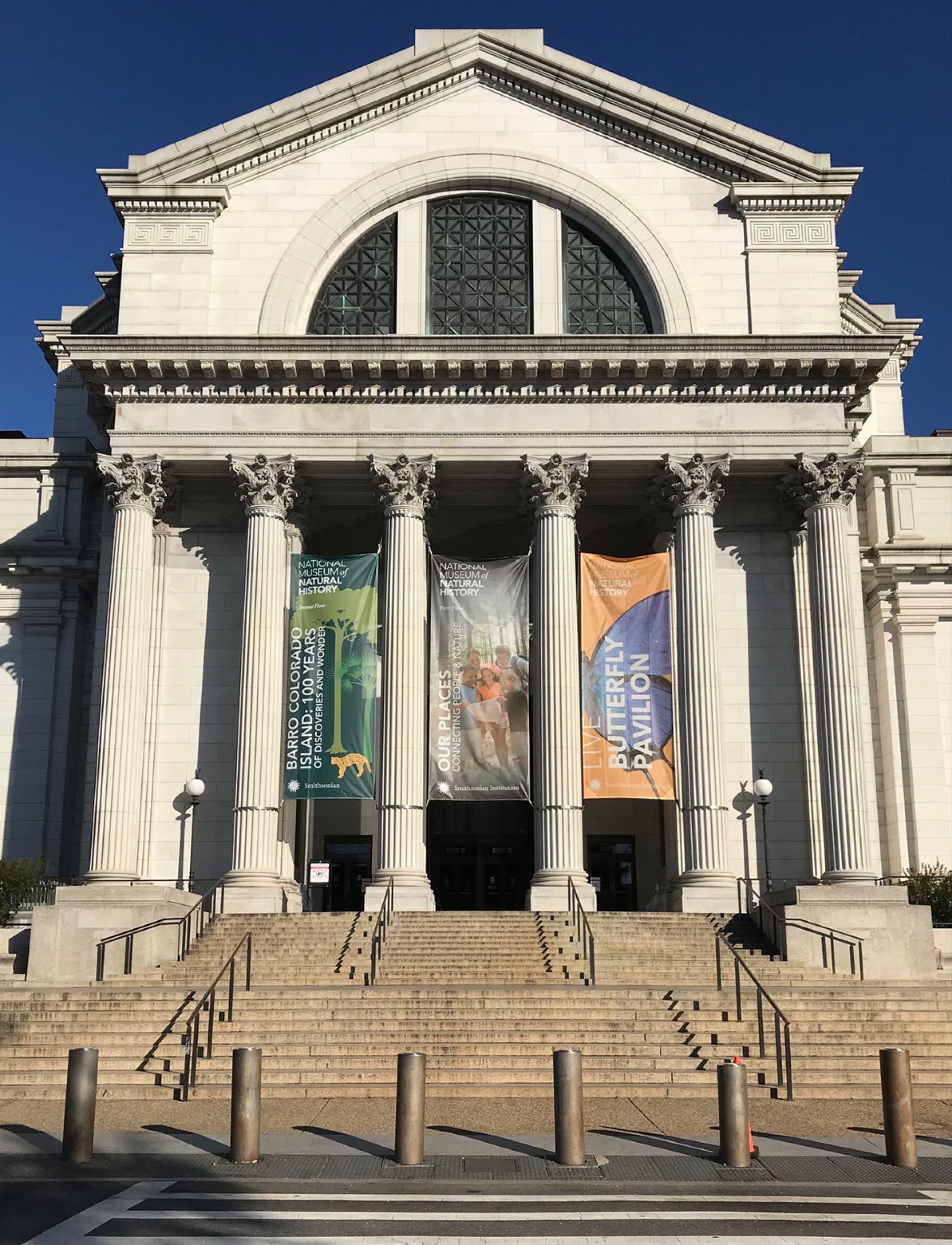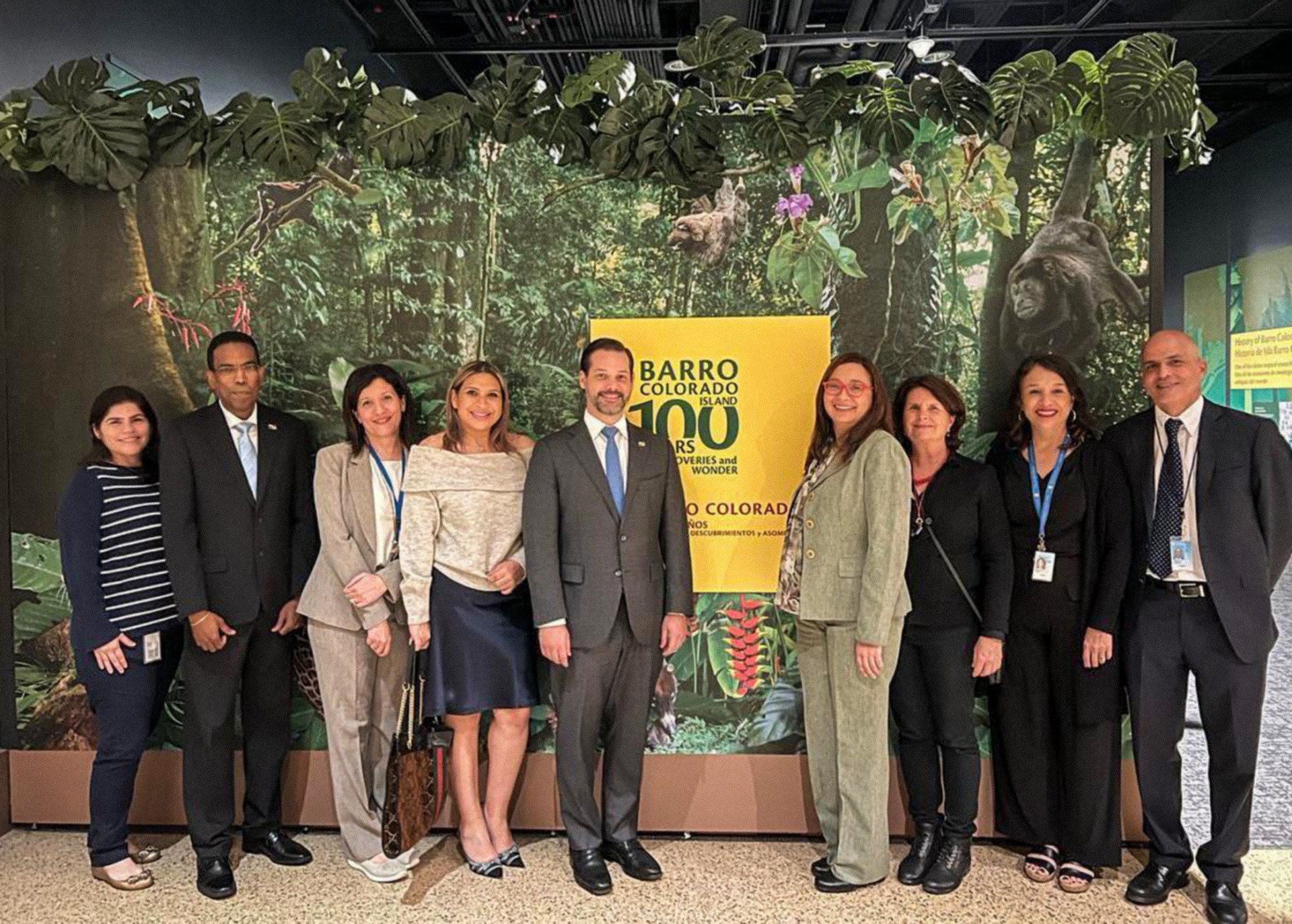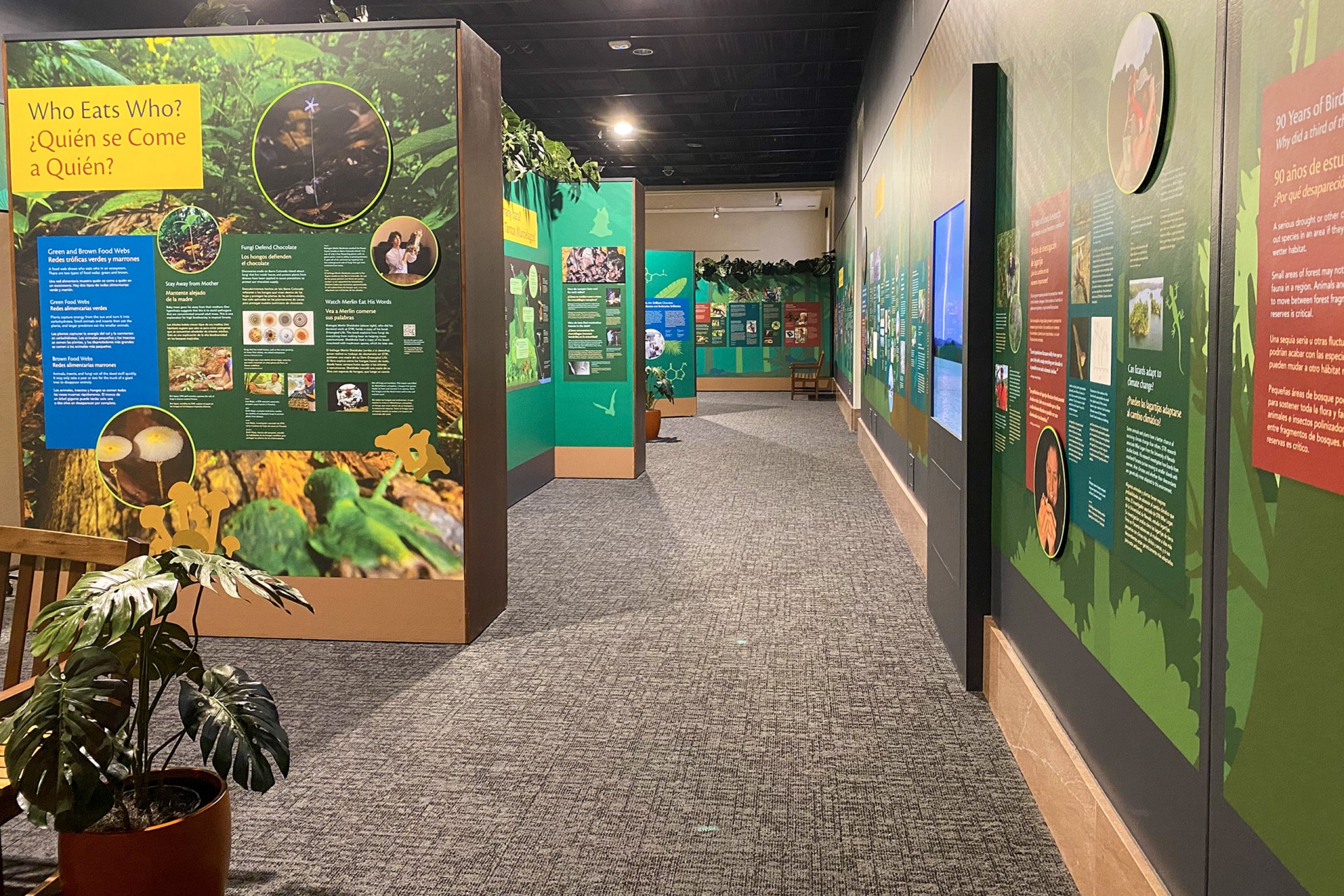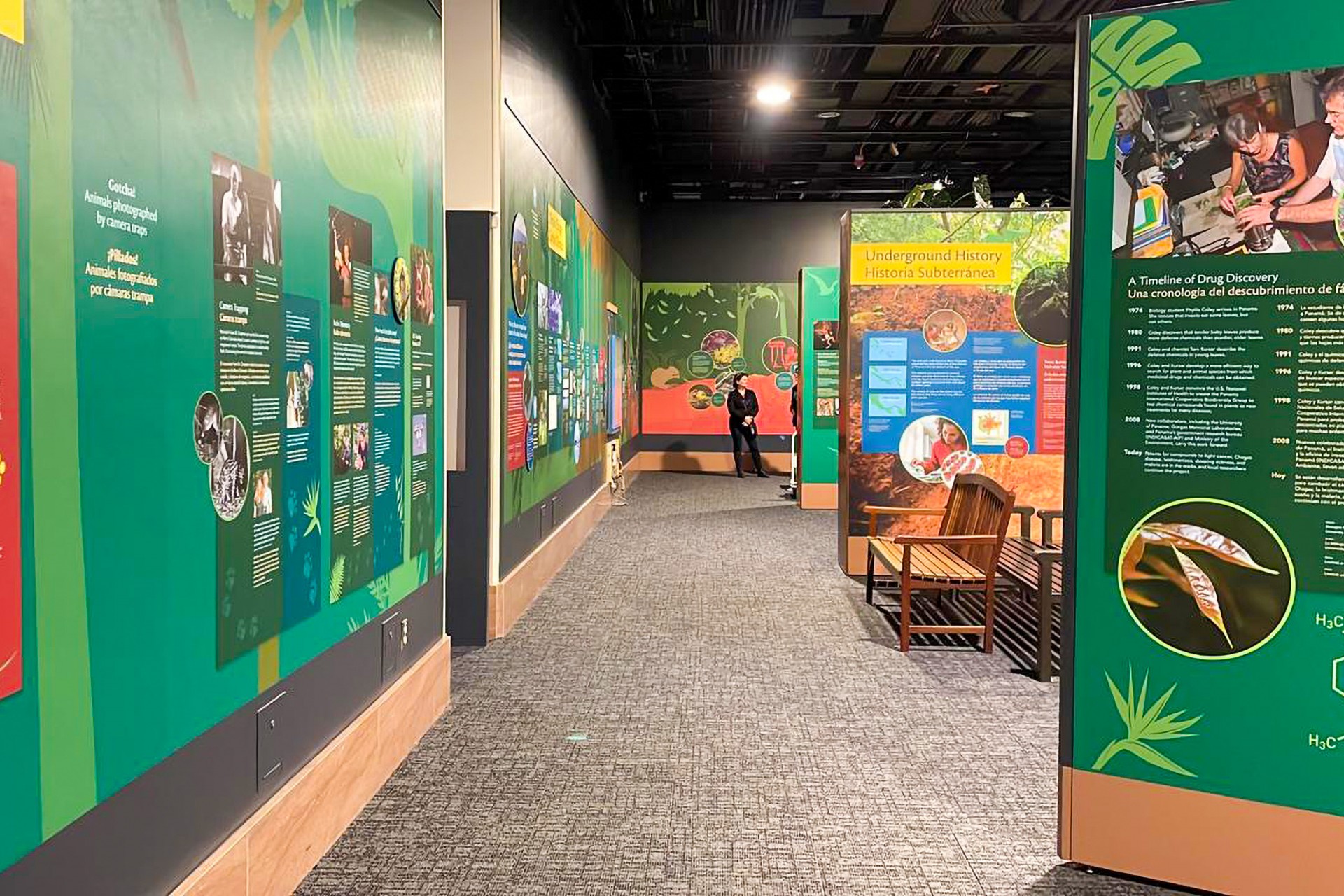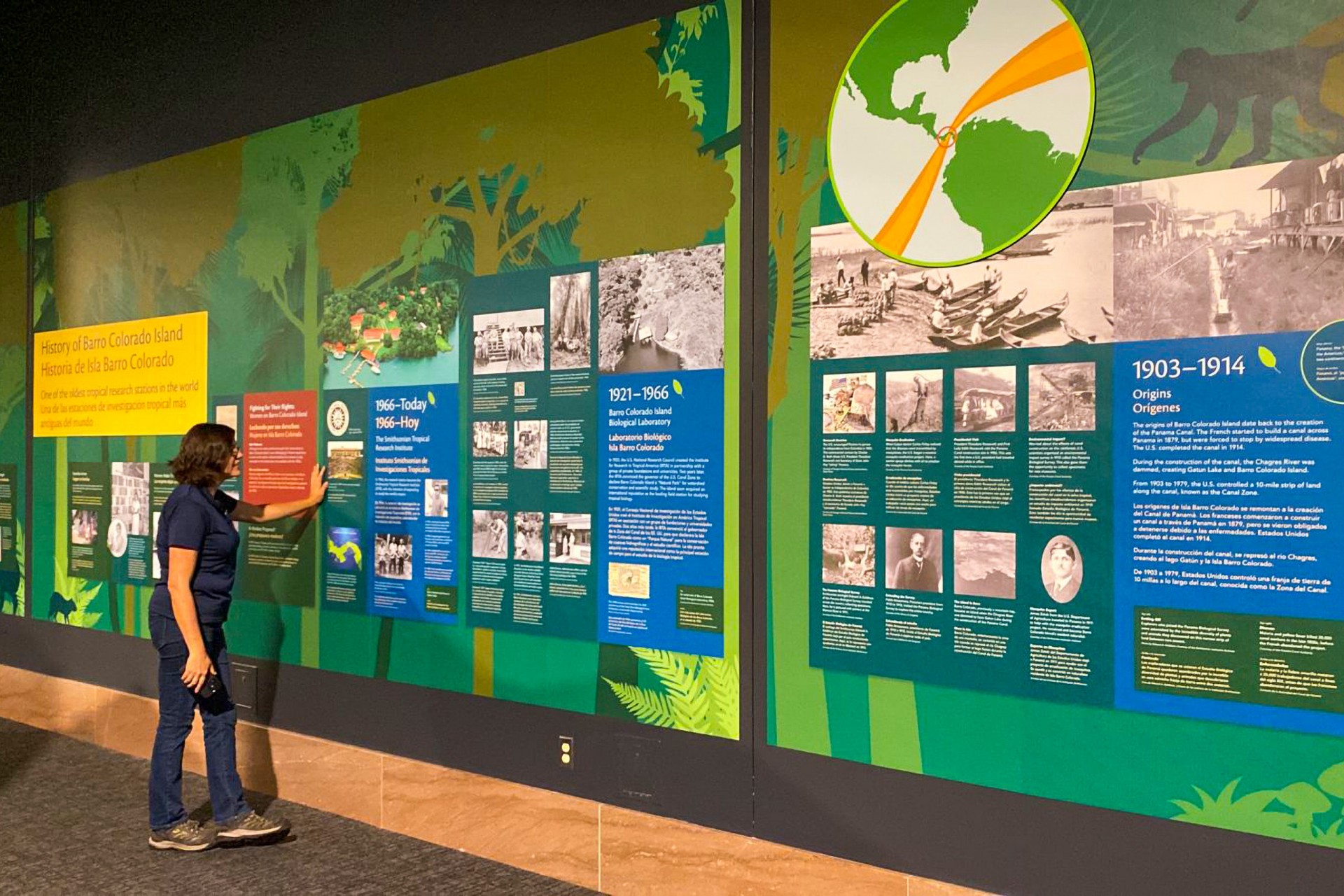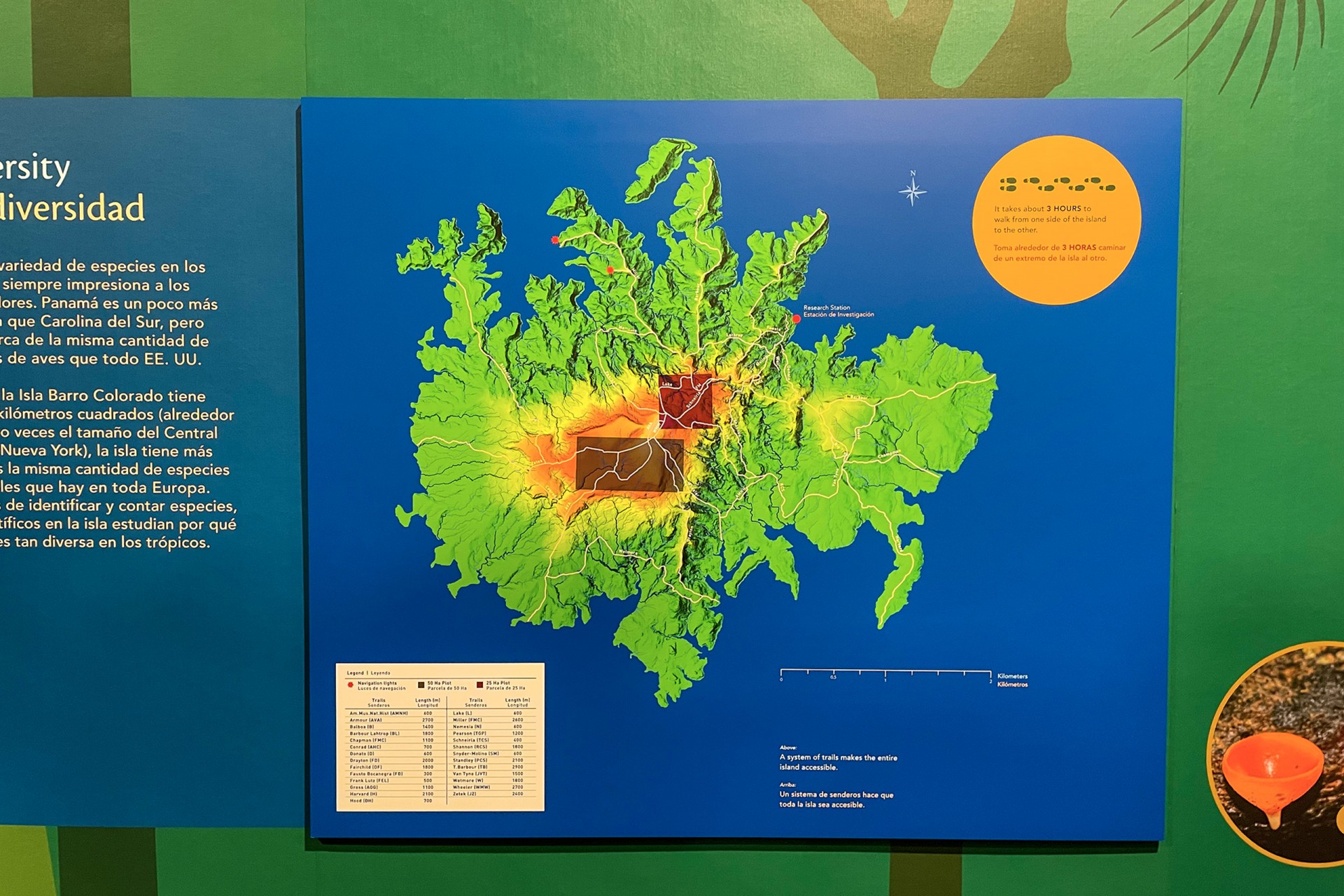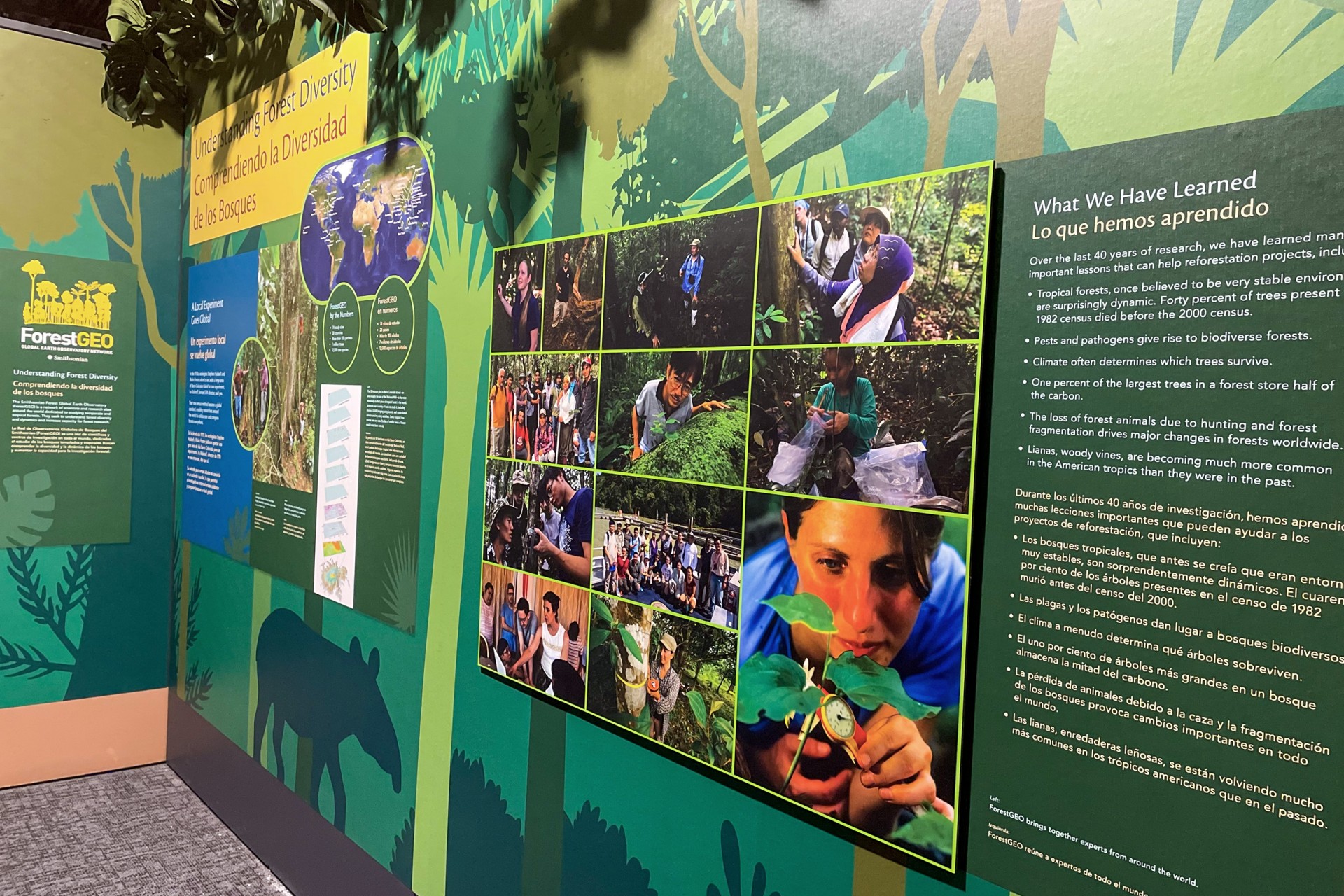Barro Colorado
birthday begins
Barro Colorado 100 years
of Discovery and Wonder exhibit
opens in Washington
Barro Colorado Island Research Station in Panama celebrates upcoming 100th birthday with an exhibition at the US National Museum of Natural History.
Exhibit title design. The bilingual exhibit opened this week at the Smithsonian's National Museum of Natural History in Washington, D.C.
Credit: Lina Gonzalez, STRI
The Smithsonian Tropical Research Institute (STRI) opened its first bilingual exhibition at the Smithsonian’s National Museum of Natural History in Washington, D.C. this week. “Barro Colorado Island: 100 Years of Discovery and Wonder,” STRI’s first major exhibition on the National Mall, celebrates 100 years of tropical forest research on Barro Colorado Island in Panama, the world’s oldest continuously studied tropical forest. An expanded version of the exhibition will be shown in Panama City at the Museo del Canal Interoceanico, a Smithsonian Affiliate museum, in April 2023.
Barro Colorado Island Research Station, Main lab building, 1924.
Credit: STRI Archives
“Nearly 100 years of science at the Smithsonian Tropical Research Institute in Panama informs the urgent actions needed to steer the world away from climate and biodiversity crises,” said Joshua Tewksbury, the Ira Rubinoff Director of STRI. “The wonder that every student, visitor and scientist feel when they visit the forest gives us hope that by fostering long-term international science, people will join together to care for life in the tropics. We thank the Panamanian government and the people of Panama for their active participation in making this ongoing scientific diplomacy experiment a success.”
Howler monkey eating flowers, Barro Colorado Island, Panama.
Credit: Steven Paton
When the Chagres River was dammed to create the Panama Canal in 1914, rising waters isolated the forested mountaintop that became Barro Colorado Island. U.S. scientists who were already working in Panama to study malaria and yellow fever, which stymied a French canal-building attempt decades before, proposed setting aside the island as a research station.
National Museum of Natural History façade with exhibit banner (far left).
Credit: Michael Lawrence
On April 17, 1923, with support from Panama’s President Belisario Porras, the governor of the former U.S. Canal Zone designated the island as a nature reserve. The station officially opened its doors about a year later. Though the 1977 Torrijos-Carter Treaties returned the canal to Panamanian jurisdiction, the Smithsonian was invited to continue as a custodian of the research station in partnership with the Panamanian government.
Members of Panama’s diplomatic corps and STRI staff. Lina González (Design Supervisor), Mario Morales (Diplomat), Linette Dutari (Associate Director for Communications and Public Programs), Siria Miranda (Head of Communications, Panama Embassy), Ambassador Ramón Martínez (Ambassador of Panama in the United States), Oris Sanjur (Deputy Director), Elisabeth King (Communications Manager), Xenia Saavedra (Associate Director for Science Administration) and Jorge Morales (Director for Finance and Administration).
Credit: Maria Alejandra Martínez
Today, STRI consists of a dozen research facilities and twice as many staff scientists. The institute serves as the world’s primary source of knowledge about tropical forests and as a training ground for tropical biologists from Panama and around the world: Almost 400 Panamanians hold permanent jobs at STRI.
Ambassador Ramón Martínez (Ambassador of Panama in the United States).
Credit: Siria Miranda
Oris Sanjur, STRI Deputy Director, gives the tour of the exhibit.
Credit: Siria Miranda
The station has been described as the site of the longest-running conversation about tropical biology and the most intensely studied piece of tropical real estate. It serves as the hub of the largest global forest research network in the world, ForestGEO, with 74 sites in 28 countries, where researchers monitor 7 million trees representing 12,000 species to better understand the effects of global change.
Thanks to generous donors, the new exhibition at the National Museum of Natural History, created as a collaboration between STRI and Smithsonian Exhibits, invites visitors to enjoy research about monkeys, microbes and more. It shows how the scientific talent behind some of the most long-term, large-scale tropical biology experiments in the world diversified as the station evolved. Researchers from 50 countries work at STRI today.


